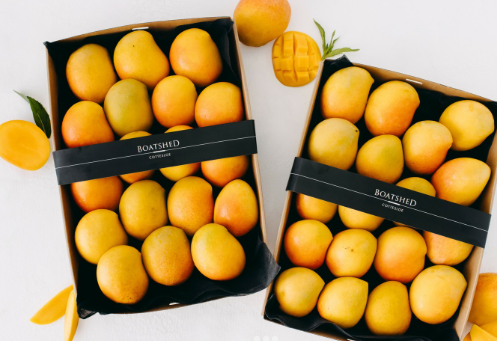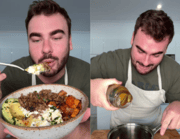
Do you remember when summer meant sticky fingers, sun-warmed skin, and trays of golden mangoes for just $15? Those days weren’t a dream—they were real, and for many Aussies, they defined the taste of the season. But as the 2024–25 mango season kicks off, reality has taken a juicier, more expensive turn.
Just a few years ago, you could pick up individual mangoes for $1 each or score 16 in a tray for less than $20. Today, even with prices easing from last year’s eye-watering highs, mango lovers are still paying around $3.50 per fruit—a reminder that the good old days of cheap summer sweetness are long gone.
Why your favourite summer fruit now costs more
Rising costs, not retailer greed, are behind the shift. Australian farmers have faced skyrocketing production expenses since 2020—up more than 62 per cent thanks to fuel, fertiliser, labour, and packaging costs.
Matt Palise from Red Rich Fruits says the current price represents the lowest sustainable level for growers. ‘Just keep in mind for everyone that those prices are sort of becoming unsustainable for farmers now,’ he said, explaining that $3.50 reflects the true cost of farming today.
This season, Darwin is forecast to produce 2.14 million trays of mangoes, with Katherine contributing another 2.06 million trays—a healthy sign that the industry is enduring despite the financial strain.
'A mango at $2 to $3 is really good value, and you're helping Australian farmers'
What you’ll pay at the checkout this summer
Major supermarkets have been quick to price competitively as fresh stock arrives. Coles and Woolworths are offering Kensington Pride mangoes for $3.50 each, while Aldi has gone slightly lower at $2.99. Independent fruit stores, however, are charging premium rates, with some Sydney stalls reaching $4.49 per mango.
For those chasing the popular R2E2 variety, expect to pay between $4.69 at Aldi and $4.90 at Coles, with Woolworths expected to restock in mid-October.
Compared to previous years, the rise is stark. Export prices hovered at $2.90 US per kg in 2017, dipped to $2.75 in 2018, rose again to $2.85 in 2019, and then jumped to $3.55 in 2020—showing a steady climb that has only continued.
Smart ways to save this mango season
While the days of $1 mangoes are over, there are still tricks to stretch your dollar. Experts suggest keeping an eye on catalogues and waiting for supermarket specials as supply ramps up.
Buying underripe mangoes is another smart move—they tend to be cheaper and will ripen perfectly at home within a few days.
How to choose the perfect mango
Look for yellow skin with a slight give when gently squeezed, and give it a smell—a good mango will have a sweet aroma at the stem end.
If the skin is still quite green, you've got a few days for ripening.
Avoid any with dark spots or wrinkled skin.
The health benefits that make them worth it
For older Australians, mangoes are more than just a treat—they’re a nutritional powerhouse. Packed with vitamin C for immunity, vitamin A for eye health, and folate for heart function, they’re a valuable addition to any diet.
Their natural enzymes can boost digestion, and their high fibre supports gut health. Plus, the vitamin K and magnesium in mangoes play a role in maintaining strong bones—a key benefit for those over 60.
Make your mangoes last longer
To get more bang for your buck, proper storage is essential. Store ripe mangoes in the fridge to extend their life for several days.
If you’ve stocked up, freeze mango cheeks for smoothies or desserts. You can also dice and freeze ripe mangoes in ice cube trays—perfect for portioned snacks or drinks.
Beyond the fruit bowl
Don’t stop at slicing mangoes over cereal. Try grilling mango cheeks on the barbecue—just a few minutes face-down, then top with lime juice and a sprinkle of chilli powder for a gourmet twist.
Or, mix diced mango with chicken salad, blend it into yoghurt smoothies, or toss it into a fresh salsa with red onion and coriander for fish dishes.
Getting the best mango value this season
- Shop at Aldi for the lowest individual prices ($2.99 for Kensington Pride)
- Watch for catalogue specials at major supermarkets
- Buy slightly underripe fruit to extend eating window
- Consider bulk purchases or freeze excess fruit for smoothies and cooking
The bigger picture for Aussie growers
Mango prices tell a larger story about Australian agriculture. Farmers are battling rising costs, labour shortages, extreme weather, and supply chain disruptions—all of which have reshaped what we pay at the checkout.
Supporting local growers means paying fair prices and ensuring the survival of Australia’s mango-growing heritage. Turning to cheap imports may save a few dollars, but it risks quality, freshness, and community livelihoods.
This year’s mild winter also threw off flowering patterns, reducing yields and shifting production schedules—another blow to growers already facing mounting challenges.
Looking ahead to peak season
Mango season will progress from Darwin to Katherine, then on to Townsville and Mareeba in Queensland, ensuring a steady supply through the summer.
Industry forecasts predict strong in-store and catalogue specials around November as volumes peak—offering shoppers their best chance at snagging a bargain.
We may never again see those iconic $15 trays, but the sweetness of Australian mangoes still promises plenty of summer joy…just at a price that reflects what it truly takes to grow them.
What This Means For You
Australia’s love affair with mangoes isn’t fading—it’s just becoming a little more expensive. Since 2020, rising farming costs have driven prices higher, making those once-affordable trays a thing of the past.
Supermarkets like ALDI are still doing their best to offer competitive prices, but even the cheapest mangoes now come with a noticeable markup. Still, for many Australians, especially those mindful of health, the nutritional payoff makes it worthwhile—mangoes are packed with vitamins that support immunity, heart health, and digestion.
By continuing to buy locally grown fruit, shoppers aren’t just enjoying summer’s sweetest treat—they’re helping sustain the farmers and communities that make mango season possible year after year.
If you’ve been shocked by how much mangoes cost this summer, you’re not alone—there’s another story shedding light on what’s happening behind the scenes in Australia’s mango farms.
Growers are speaking out about how unpredictable weather and rising expenses are shaping both supply and price this season.
It’s a closer look at the challenges that could make your next tray of mangoes even harder to find.
Mango season: Aussie summer fruit hit with 62 per cent price increase — Kitchen Nine reported on the rising cost of mangoes across Australia, highlighting how farm expenses and production challenges have driven up prices for the 2024–25 season.
[https://kitchen.nine.com.au/latest/...creases/5d355ddc-c4da-4812-89d0-7667068deedd)
Horticulture Insights October 2024 | Rural Bank — The report detailed mango market conditions, noting wholesale prices of Kensington Pride mangoes from the Northern Territory fell 27.2 per cent to $5.42/kg in September.
[https://www.ruralbank.com.au/knowle...insights/horticulture/insights-october-2024/)
Horticulture Insights October 2024 | Rural Bank — Forecasts showed Darwin is expected to produce 2.14 million trays of mangoes this season, down from 2.4 million previously estimated, while Katherine is forecast at 2.06 million trays.
[https://www.ruralbank.com.au/knowle...insights/horticulture/insights-october-2024/)
Mangoes Price in Australia—September 2025 Market Prices (Updated Daily) — Historical export data showed prices rising from $2.90 USD per kg in 2017 to $3.55 USD per kg in 2020, reflecting a steady upward trend in global mango prices.
[https://www.selinawamucii.com/insig...mucii.com/insights/prices/australia/mangoes/)
Have you noticed mango prices climbing over the years, and what’s your best tip for stretching your fruit budget this summer?







